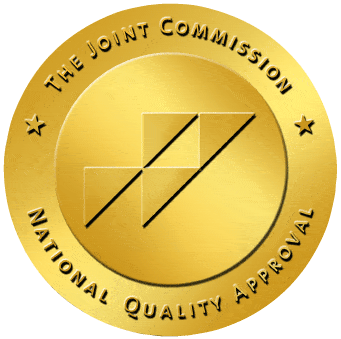Ohio has rapidly become ground zero for one of the worst outbreaks of drug-related deaths in the country’s history. At the center of the event are opiates, a class of drugs regularly prescribed as painkillers by doctors. Between 2010 and 2015, the state rapidly emerged as the drug overdose capital of the nation. According to a report from the state government, in 2016, deaths from heroin sat at 1,444, and deaths from fentanyl, a class of synthetic opiates, hit 2,357. Deaths attributed to unintended overdoses were 4,050, representing a year-over-year rise of nearly one-third.
It’s not short-selling the situation to call this an Ohio heroin epidemic. Beyond the death toll, the human cost in degraded lives is harder to measure as people being found passed out while doing opiates has become an everyday issue for police forces and hospitals to deal with. Many children have been displaced from their homes, ending up living with relatives or within the foster care system because their parents are incapable of dealing with their addictions. Infant hospitalizations are also on the rise.
Ohio is Barely Coping
With some luck, lives may be turned around by the addiction treatment process, but the recovery system is being heavily taxed at a time when a growing number of individuals require help. Police officers in Ohio are regularly being sent into the field with Narcan, a drug designed to quickly reverse the most immediately dangerous effects of an overdose. Making the job more challenging is that the heroin supply is often being cut with extreme opiates, such as carfentanil, a drug typically reserved for use on large animals. In 2007, deaths from drug overdoses in the state exceeded motor vehicle fatalities for the first time since records were kept. Even more frightening, many drug dealers choose to cut their products with dangerous versions of fentanyl because rumors of overdose deaths attract customers who prefer the strong stuff to anything that might seem watered down. It’s estimated that nearly 10 percent of U.S. deaths from overdosed caused opiates occur in the state of Ohio. All of this raises the question: How did Ohio become the state hardest hit by these drugs? One of the biggest culprits was the excessive prescription of painkillers that started to emerge in the 1990s. Many medical professionals were being increasingly graded on the basis of metrics related to patient satisfaction, especially regarding pain levels. Accompanying this already worrying trend was the growth of pill mills, small pharmacies that catered to a new set of customers. The economically depressed southeastern corner of the state became particularly thick with mills during this period. Drug companies also offered new products that they hoped would have reduced effects only to discover that the tolerance processes tied to the use of opiates were harder to master than they had expected. In many instances, a drug addiction started with the best of intentions. For example, a teenager might go to the dentist to have all four wisdom teeth pulled. It’s increasingly common for a prescription for hydrocodone to be issued following such a procedure. Getting a prescription for painkillers after a surgery is a simple process, and it involves a lot of trust in a professional’s expertise, but it has the potential to go terribly wrong, especially for people who may already be genetically predisposed to addiction. Genetics may make certain individuals more likely to abuse prescription medication, leaving them seeking illegal sources for more of the drug when their prescription runs out. In 2012, the state implemented what has come to be called Casey’s Law. The bill was intended to strengthen the process that allowed the court to involuntarily remand an individual to the custody of a recovery center. More than half of the state’s counties also set up courts specifically designed to address the unique challenges of these cases, trying to keep a focus on helping people avoid prison by giving them access to the addiction treatment system. A number of residential and outpatient treatment programs have appeared to try to fill the woeful gap in the social safety net. The state has also invested heavily in education initiatives with the hope that early intervention might save money down the road. There is now an automated prescription reporting system in place to identify pharmacies that have been problematic in their distributions of pills like hydrocodone. Distribution of painkillers to minors without parental consent has also been strictly regulated. Resources are being made available to communities to ensure that they can identify problems and start to cope with them.Tough Sledding
Despite all these efforts, there has been little headwind developing to slow down to the Ohio heroin epidemic. Of the 10 cities in the U.S. with the highest drug overdose rates, three are in this state: Dayton, Cincinnati and Toledo. Victims of overdoses cover the entire spectrum of humanity. While male misuse of opiates rose more than 50 percent nationally since 2002, female users were abusing the drugs at an increased clip of more than 100 percent. Abuse during the same period among individuals with incomes above $50,000 per year rose more than 60 percent. While the peak of the over-prescription crisis appears to have hit in 2008, the genie has long since gotten out of the bottle. Opiates have become commonplace among all economic classes and ethnicities, and they are now considered to be nationally the worst drug problem.Personal Tragedies
You may remember when a couple from Ohio that overdosed on heroin with a 4-year-old boy in the backseat. The picture of the two of them passed out in the front with the child in the back has since become viral after East Liverpool police posted it online to their city’s Facebook page. The idea was to show the rest of the world how immense the heroin problem is in Ohio. In 2016, James Acord was driving his girlfriend Rhonda Pasek and her grandson apparently to the local hospital. Pasek had overdosed on heroin. An officer pulled Acord over because he was driving erratically, and shortly after beginning to explain where he was going, Acord himself overdosed on heroin. When the officer turned the ignition off, he noticed the 4-year-old child. Both Acord and Pasek face multiple charges. As shocking as this story is to those of us outside Ohio, it’s even more shocking to realize how common things like this are inside Ohio. Consider this heartbreaking quote from a Stat article about heroin in Ohio: “Unconscious addicts are so frequently dumped in the hospital parking lot that administrators developed a special alert system to treat them. Paramedics have plucked overdose victims from roadside ditches, from the Walmart parking lot, and from living rooms across town. It has become routine for children to see a passed-out parent jolted to life with a dose of Narcan.”Local Stories
- In 2016, another grandmother from Ohio overdosed with a child in her vehicle. Debra Hyde, 56, was found passed out from a heroin overdose behind the steering wheel of her pickup truck. Her eight-month-old grandson was inside. To make matters worse, the truck was locked, in drive, the engine running, and in front of a propane tank storage shed at a gas station. An emergency rescue crew had to break two windows to safely remove both of them. Debra Hyde later said: “One time. Do you want to take that chance? No. It’s not worth it. It’s not worth it. It doesn’t solve your problems. It’s just gonna make loved ones hurt in the end.”
- On September 2nd , 2016, Jason Hess of Crestville died from a heroin overdose. He was 35 and had been addicted to heroin for fifteen years. Just weeks before his death, Hess suffered a non-fatal overdose and his father, John Hess, had to revive him. John was quoted as saying, “I did two tours in Vietnam. I’ve seen a lot of stuff. You can’t describe it. I literally had to breathe life into him.” A few hours after Jason’s mother, Barbara Fultz, found out about his death, she committed suicide. It was her 60th birthday. “Life is no longer enjoyable; I have been like Samson holding up the pillars too long,” read part of her suicide note.
- In 2014, Laura Bagot of Westerville tried heroin for her first time and died of an overdose.
- In 2012, also in Westerville, 25-year-old Emily Thacker was charged with manslaughter after fatally injecting Russell Ronske with heroin.














